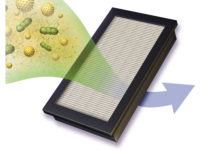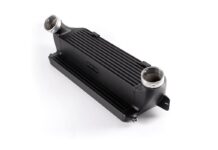Many beginners are unsure how to start a printed circuit board design project, and the entire process often seems foreign to people who are new to printed circuit boards, or even electronics in general. The good news is, you no longer need to be an engineer in order to understand and design a PCB design project that meets your needs. If you don’t know where to begin, you’re not alone. Successful PCB design projects typically follow certain steps, although their order may change depending on the preferred working style or amount of experience someone has.
#1 Make a List of Requirements
Before you dive into creating your PCB design, make a list of requirements for your project. You should have lists of must-have components and materials, and understand the problem that your printed circuit board will be solving. Depending on the industry and application, your printed circuit board may also need to meet certain standards, or have unusual specifications that need to be worked around. By creating separate lists for requirements and wants, you will be able to design the best circuit board possible, within your project’s limitations.
#2 Decide on a Budget
Your budget is going to directly influence your printed circuit board’s design, so you should decide on how much you want your overall PCB costs to be before you begin creating your schematic. That way, you don’t end up having to start all over again when you’re unable to cut costs on your design.
Your budget shouldn’t be a single hard and fast number, but rather a range of acceptable costs. Nearly everyone overshoots their budget on their first project; don’t be discouraged if you need to rework your design several times to make it meet your project’s demands, within an acceptable price point.
#3 Create a Schematic
A schematic is essential for designing printed circuit boards. Your schematic may start off rough, but you should include all of the basic components and connections, and can be done by hand on paper, or by using a schematic software. Like any other rough draft, it’s more important to get the basic idea down than to get it perfect. To begin, create the most minimalist design possible that will fulfill your list of requirements. Once you have a schematic started, it’s easier to see which components should be grouped together to shorten leads or make your printed circuit board easier (or cheaper) to manufacture. You can also quickly determine where added components will benefit your design.
#4 Optimize Your Layout
There are many ways to optimize your layout, from grouping components a certain way, to changing the amount of layers your board has. The best ways to optimize your layout are going to vary from project to project, so unfortunately there aren’t any hard-and-fast rules that will apply to every design. Generally, grouping components together to shorten leads, and working around the limitations of the space where your printed circuit board will be used is a good place to start.
You should also be mindful of the materials you are using. Is the board flexible or rigid? How much heat will the circuit generate? Is the weight distribution of components an important factor? At this point, you should be able to create a list of parts to get a better idea of whether or not you are within your desired budget. From there, you can continue to tweak your design until you’re happy with the balance between performance and budget.
#5 Talk to Your PCB Manufacturer
If you are ready to buy a circuit board but unsure whether you are making the best decision regarding your layout of schematic, don’t be shy about asking your PCB manufacturer for their advice. They often have in-house engineers that are happy to answer your questions. There are tips and tricks that PCB manufacturers know that only come with years of experience. When you ask questions and submit your design for review, you may be able to gain important insights that will save you time and money when you begin printing and assembling your circuit boards.
If you have never designed a printed circuit board, don’t be intimidated! New printed circuit board design softwares makes it easier than ever to make sure your PCB will work correctly. Printed circuit board manufacturers are now able to produce orders as small as a single board, so there is no longer a barrier of having to order wholesale numbers in order to have a professionally manufactured circuit board. Hobbyists, makers, students, and inventors are now all able to access the same services that were once reserved for large corporations.








